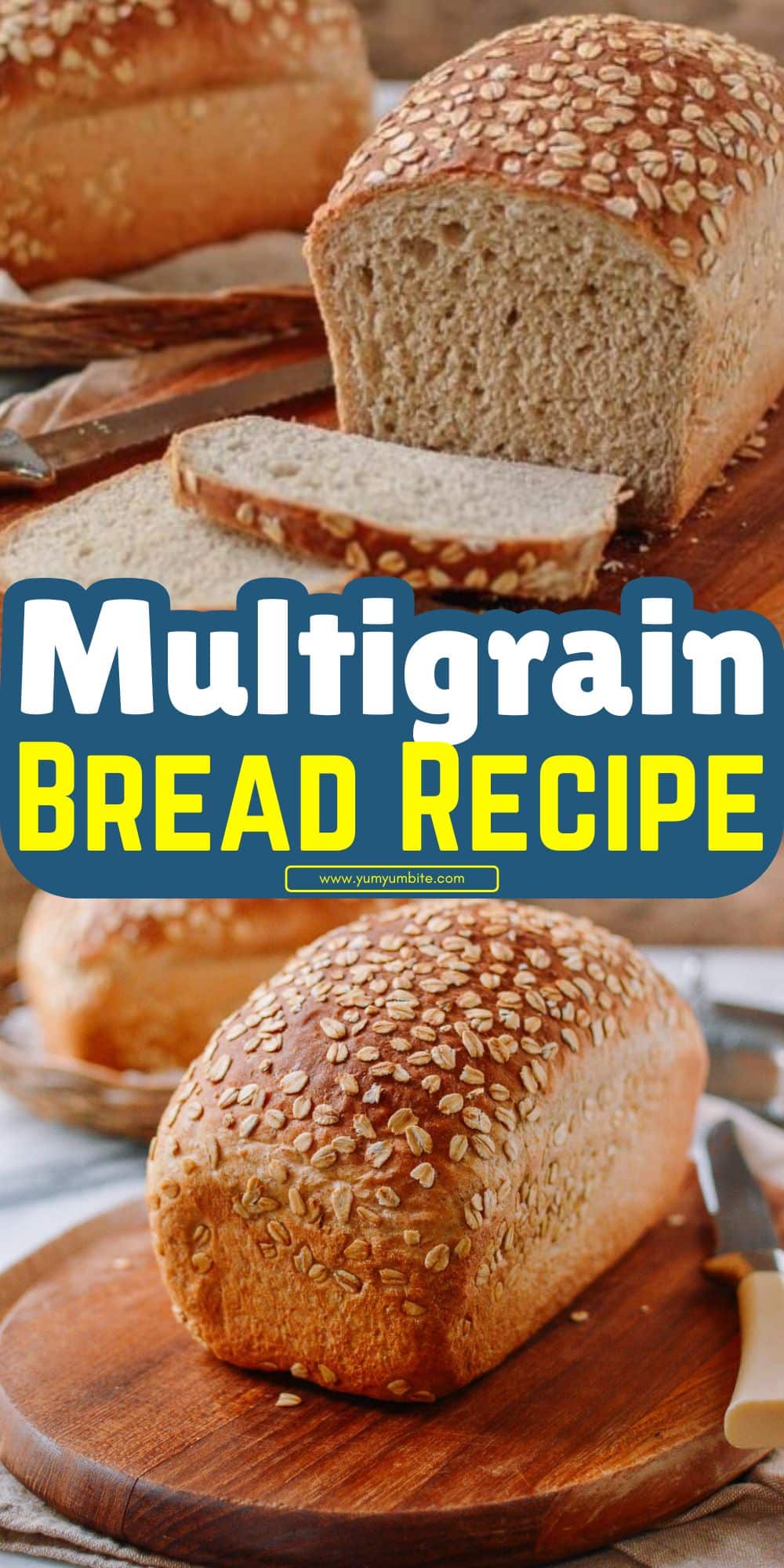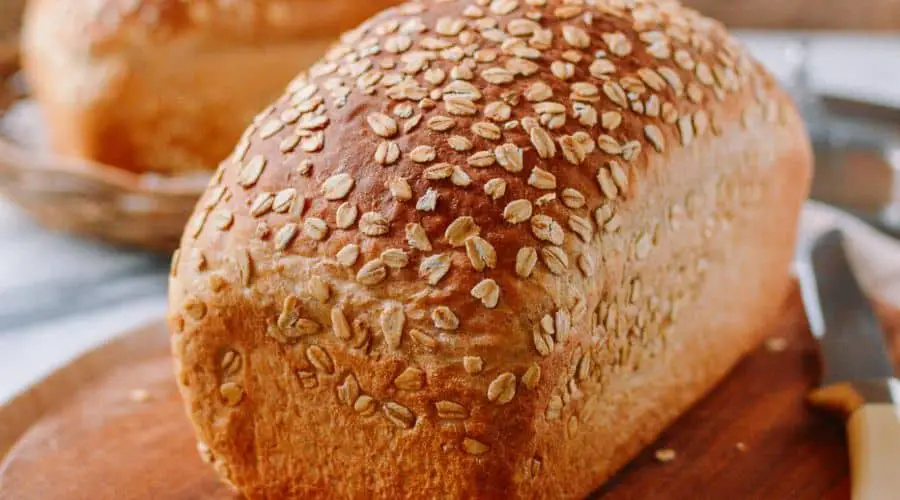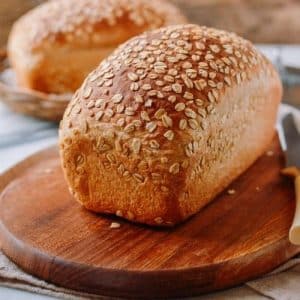All products are selected by our editorial team for quality. If you buy through our links, we may earn a small commission at no extra cost to you.
There’s nothing quite like the aroma of freshly baked Multigrain Bread filling your kitchen.
This hearty, nutritious loaf is packed with a variety of grains and seeds, offering a rich, nutty flavor with a soft and chewy texture.
Perfect for sandwiches, toast, or simply enjoying with a smear of butter, this homemade multigrain bread is a healthier alternative to store-bought versions.
Whether you’re a seasoned baker or a beginner, this step-by-step guide will help you create the perfect loaf with ease.

Why You’ll Love This Multigrain Bread
1. Loaded with Nutrients
Made with a mix of whole wheat flour, oats, and seeds, this bread is rich in fiber, vitamins, and minerals, making it a great choice for a wholesome diet.
2. Soft and Flavorful
Unlike some dense whole-grain breads, this recipe produces a loaf with a soft crumb and a lightly chewy texture, thanks to the perfect balance of ingredients.
3. Customizable with Your Favorite Grains
You can mix and match different grains and seeds such as flaxseeds, sunflower seeds, or even chia seeds to suit your taste.
4. No Artificial Additives
Unlike store-bought multigrain bread, this homemade version contains no preservatives, refined sugars, or artificial flavors—just wholesome, natural ingredients.
5. Freezes Well
Bake a couple of loaves at a time and freeze one for later—perfect for meal prep and reducing food waste.
Ingredients You’ll Need
For the Dough:
- 2 cups whole wheat flour
- 1 cup bread flour or all-purpose flour
- ½ cup rolled oats
- ¼ cup flaxseeds
- ¼ cup sunflower seeds
- 2 ¼ teaspoons instant yeast (1 packet)
- 1 ¼ cups warm water (110°F/43°C)
- 2 tablespoons honey or maple syrup
- 1 teaspoon salt
- 2 tablespoons olive oil or melted butter
For Topping (Optional):
- 1 tablespoon rolled oats
- 1 tablespoon sunflower or sesame seeds
Step-by-Step Instructions

Step 1: Activate the Yeast
In a small bowl, combine warm water, yeast, and honey or maple syrup.
Stir gently and let it sit for 5–10 minutes until it becomes foamy.
This ensures the yeast is active and will help the bread rise properly.
Step 2: Mix the Dry Ingredients
In a large mixing bowl, whisk together whole wheat flour, bread flour, oats, flaxseeds, sunflower seeds, and salt until evenly combined.
Step 3: Combine Wet and Dry Ingredients
Pour the activated yeast mixture and olive oil into the dry ingredients.
Stir with a wooden spoon or dough hook until a rough dough forms.
Step 4: Knead the Dough
Transfer the dough to a lightly floured surface and knead for 8–10 minutes until it becomes smooth and elastic.
If the dough is too sticky, add a little more flour, one tablespoon at a time.
Step 5: First Rise
Place the dough in a greased bowl, cover it with a clean kitchen towel, and let it rise in a warm place for 1–1.5 hours, or until it doubles in size.
Step 6: Shape the Dough
Once risen, punch down the dough to release excess air.
Shape it into a loaf and place it in a greased 9×5-inch loaf pan.
Step 7: Second Rise
Cover the loaf pan with a towel and let it rise again for 30–45 minutes until puffy.
Meanwhile, preheat your oven to 375°F (190°C).
Step 8: Add Toppings & Bake
Brush the top of the dough with a little water and sprinkle with rolled oats and seeds if desired.
Bake for 30–35 minutes, or until the top is golden brown and the bread sounds hollow when tapped on the bottom.
Step 9: Cool & Enjoy
Remove the bread from the oven and let it cool in the pan for 5–10 minutes, then transfer it to a wire rack to cool completely.
Slice and enjoy with your favorite spreads or as sandwich bread!
Tips for Perfect Multigrain Bread
1. Use Fresh Yeast
Always check the expiration date of your yeast.
If your yeast doesn’t foam when activated, it’s likely expired, and your bread won’t rise properly.
2. Don’t Skip the Kneading
Kneading is essential to develop gluten, which gives the bread its soft, chewy texture.
Knead for at least 8–10 minutes until the dough is smooth and elastic.
3. Give It Enough Time to Rise
Patience is key! Let the dough rise in a warm, draft-free place until it doubles in size.
If your kitchen is cold, you can place the dough in a slightly warmed oven (turned off) to speed up the process.
4. Adjust the Liquid as Needed
Different flours and grains absorb liquid differently. If your dough feels too dry, add a tablespoon of warm water at a time.
If it’s too sticky, sprinkle in a little extra flour.
5. Use a Thermometer for Accuracy
For perfectly baked bread, use an instant-read thermometer.
The internal temperature should reach 190°F (88°C) when fully baked.
How to Store and Freeze Multigrain Bread
Storing at Room Temperature
- Once the bread has cooled completely, store it in an airtight container or wrap it in plastic wrap.
- It will stay fresh for 3–4 days at room temperature.
Refrigerating Multigrain Bread
- If you live in a humid climate, refrigeration can prevent mold.
- Store the bread in an airtight container and consume within 5–7 days.
Freezing for Long-Term Storage
- Wrap the loaf or slices tightly in plastic wrap and then in aluminum foil to prevent freezer burn.
- Store in a freezer-safe bag for up to 3 months.
- To thaw, let it sit at room temperature or toast slices straight from the freezer.
Final Thoughts
Homemade Multigrain Bread is a fantastic way to enjoy a wholesome, nutrient-packed loaf without any artificial additives.
Whether you’re making it for sandwiches, toast, or just enjoying it with butter and jam, this recipe is a perfect balance of health and flavor.
With the right ingredients, proper kneading, and careful rising, you’ll achieve a soft, delicious loaf every time.
Give it a try, and soon, you might never go back to store-bought bread!
Frequently Asked Questions
1. Can I use different grains in this recipe?
Yes! Feel free to experiment with quinoa, chia seeds, pumpkin seeds, or even millet to customize the flavor and texture of your multigrain bread.
2. Why is my bread too dense?
Dense bread is usually caused by insufficient kneading, not letting the dough rise long enough, or using too much whole wheat flour without enough gluten development.
Make sure to knead properly and allow enough proofing time.
3. Can I make this recipe gluten-free?
Since gluten is important for the structure of the bread, replacing all the flour with gluten-free options may not work.
However, you can try a gluten-free flour blend with added xanthan gum for better results.
4. Can I use a bread machine for this recipe?
Yes! Simply add the ingredients in the order recommended by your bread machine manufacturer and use the whole wheat or multigrain bread setting.
5. How can I make this bread softer?
Adding a tablespoon of milk, yogurt, or even mashed potatoes to the dough can help create a softer texture while keeping the bread moist.

Multigrain Bread
Equipment
- 1 large mixing bowl
- 1 Small bowl (for activating yeast)
- 1 measuring cup
- 1 Measuring Spoon Set
- 1 Whisk or wooden spoon
- 1 stand mixer with a dough hook (optional)
- 1 9×5-inch Loaf Pan
- 1 Clean kitchen towel
- 1 Cooling Rack
Ingredients
For the Bread Dough
- 1 ¼ cups 300 ml warm water (about 110°F or 45°C)
- 1 tablespoon maple syrup or honey for non-vegan option
- 2 ¼ teaspoons 1 packet active dry yeast
- 2 cups 240g whole wheat flour
- 1 cup 120g bread flour
- ¼ cup 30g rolled oats
- ¼ cup 30g sunflower seeds
- 2 tablespoons flaxseeds
- 1 tablespoon chia seeds
- 1 teaspoon salt
- 2 tablespoons olive oil
For Topping (Optional)
- 1 tablespoon rolled oats
- 1 teaspoon sesame seeds
Instructions
Step 1: Activate the Yeast
- In a small bowl, combine warm water, maple syrup, and active dry yeast. Stir gently and let sit for 5–10 minutes until foamy. This step ensures the yeast is alive and active.
Step 2: Mix Dry Ingredients
- In a large mixing bowl, combine whole wheat flour, bread flour, oats, sunflower seeds, flaxseeds, chia seeds, and salt. Mix well.
Step 3: Combine Wet and Dry Ingredients
- Pour the activated yeast mixture and olive oil into the dry ingredients. Mix using a wooden spoon or a stand mixer fitted with a dough hook until a rough dough forms.
Step 4: Knead the Dough
- Knead the dough for 8–10 minutes until it becomes smooth and elastic. If it's too sticky, add a little flour; if too dry, add a teaspoon of water.
Step 5: First Rise
- Place the dough in a lightly greased bowl, cover with a clean kitchen towel, and let it rise in a warm place for 1 hour, or until doubled in size.
Step 6: Shape the Loaf
- Punch down the dough to release air bubbles, then shape it into a loaf. Place it into a greased 9×5-inch loaf pan.
Step 7: Second Rise
- Cover and let it rise again for 30 minutes. Meanwhile, preheat the oven to 375°F (190°C).
Step 8: Bake the Bread
- Brush the top with a little water and sprinkle oats and sesame seeds for extra crunch. Bake for 35–40 minutes, or until the bread sounds hollow when tapped.
Step 9: Cool and Serve
- Remove the loaf from the pan and let it cool on a wire rack before slicing.
Notes
- Make it Gluten-Free: Swap whole wheat and bread flour with a 1:1 gluten-free flour blend and add 1 teaspoon of xanthan gum.
- Sweeter Variation: Add 1 tablespoon of brown sugar or molasses for a slightly sweet taste.
- Storage Tip: Store at room temperature for 3–4 days or freeze for up to 3 months.

